SOUTH AMERICAN DENIZENS
Being a Latina—though not from South America—I love the variety of animals that live south of the equator. They’re thought to be fun-loving, and tropical vibes are always in. This section has favorite animals of the moment: the sloth, the cotton-topped tamarind, and the llama. Painting their quirks and adorable features is a shortcut to a smile.
SOUTH AMERICAN HIGHLIGHTS
» PAINTING WHITE. White fur can be a challenge, but you’ll learn how to take on the task lightly.
» VIBRANT BROWNS. The browns of the sloth become a vibrant array of warm tones.
» LONG FUR. The fur of the tamarind monkey and the sloth differ greatly from previous animals we’ve painted. Show it with brushstrokes.

Llama

Sloth

Cotton-Topped Tamarind
DRAWING
These animals don’t have highly distinguishable body parts: the sloth with its dangling limbs and the llama with a wide body and short legs. They all rely on their unique features to distinguish them.
Draw the Llama
1Draw the main proportions of the llama. Notice its large body mass and small legs.

2Outline the llama’s neck and head, including his long ears. Use a jagged line to show fur.

3Draw the tiny facial features of the llama and add a little tuft under the chin to imply the protruding snout.
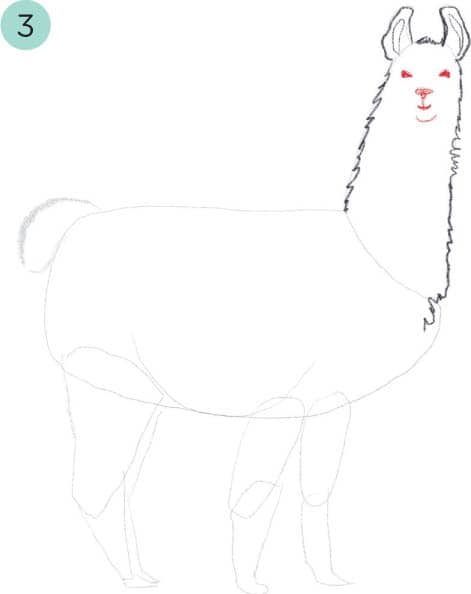
4Draw the body with curly and zigzag lines, noticing in which direction the fur would angle.

5Draw the legs. The front legs are in slight motion while the back legs echo each other’s form. Fur tapers at the knees.

6Finally, add the llama’s fluffy tail.

7The finished llama.
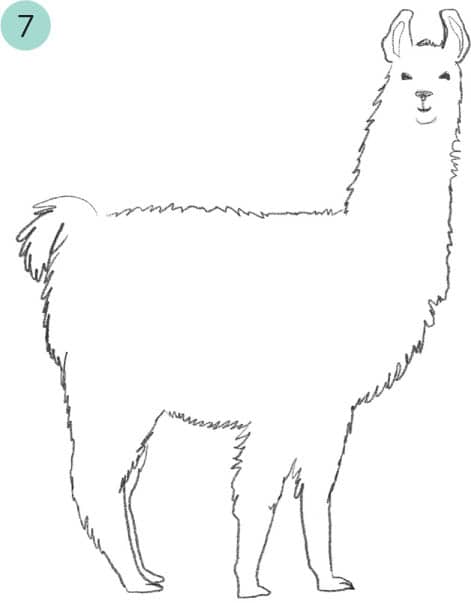
Draw the Sloth
1Begin by drawing the sloth’s round head. Use longer lines at the chin to show his long fur.

2Draw the sloth’s long arm, topped with long claws.
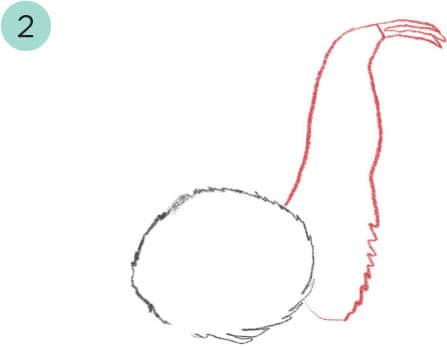
3As you draw the arm extended forward, foreshorten the arm and show more of his long claws that look like shears.

4Outline the body of the sloth with sharp, jagged lines.
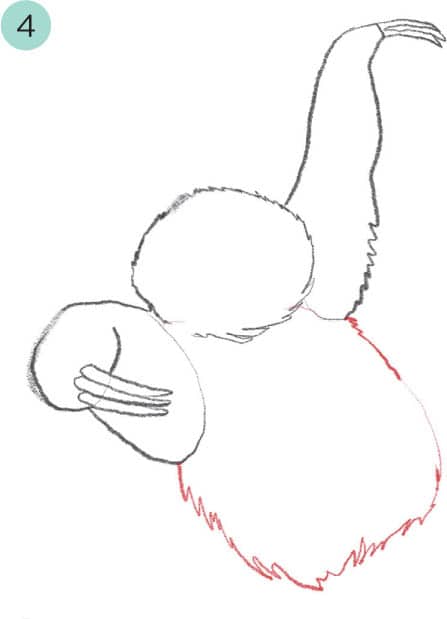
5The sloth’s leg that is wrapping around a vine only shows as a long oval. Draw the other leg’s foot peeking forward from behind. Again, add long claws.
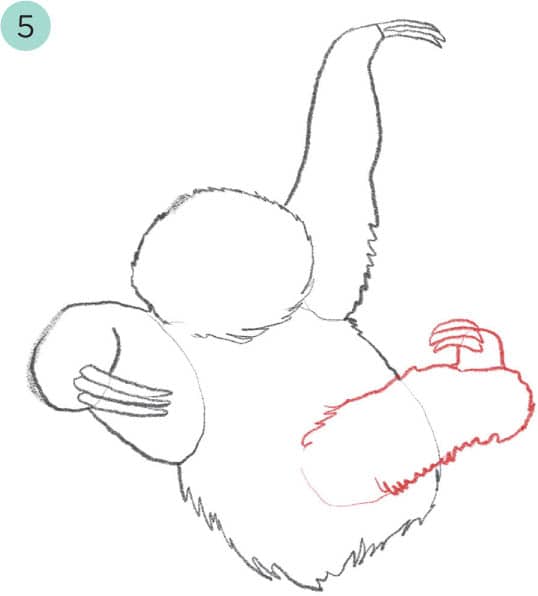
6Draw the sloth’s face markings by outlining the boundaries of the face as well as the darkened eye area.

7Draw the sloth’s face, including a round nose with obvious nostrils.
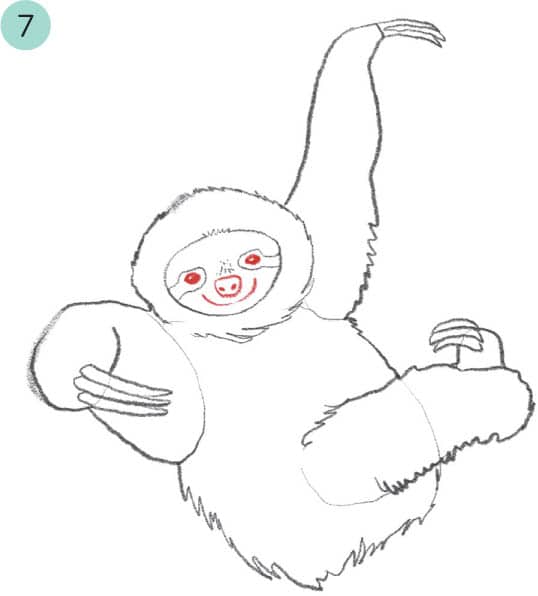
8The finished sloth.

Draw the Cotton-Topped Tamarind
1This animal is especially furry but establishing a few basic shapes will help orient us all the more.

2Outline the face area, leaving the bottom untouched. Add tufts of fur at the brow.

3Draw the nose and mouth.

4Draw round, small eyes.

5Draw tiny ears that jut from either side of his head.

6Mark his mane with long lines to depict his long hair.

7Sketch in the second layer of hair that comes out from beneath the white crown just drawn.
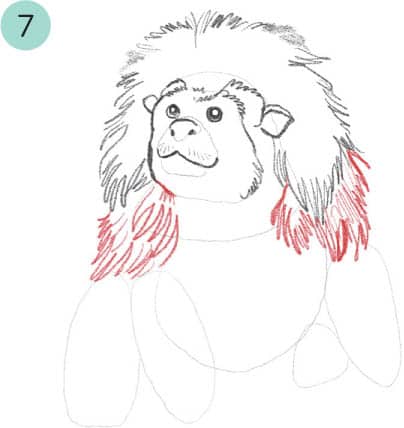
8Following the first forms drawn, outline the body in greater detail. The tamarind’s feet have long fingers topped with long claws. The tummy is especially furry as the hair points downward.

9Shade in the dark areas of the face and second layer of hair crown.
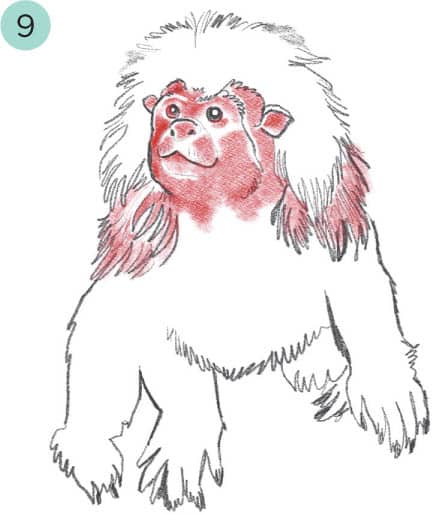
10 The finished cotton-topped tamarind.

PAINTING
Our top priority will be drawing out the one-of-a-kind charm of these exotic creatures. Our greatest challenge will be to wait until the last steps to paint those cute faces! Be sure to have a small brush with pointed bristles to make these small details.
Paint the Llama
Admit it: Some of you picked up this book thanks to the llama. He’s one part elegant and one part goofy, adding up to a very adorable animal.
COLORS
![]() Dr. Ph. Martin’s Radiant Concentrated Watercolors: 28B Sepia, 22B Slate Blue, 54D Indian Yellow, 36C Tobacco Brown, 56D Coffee Brown
Dr. Ph. Martin’s Radiant Concentrated Watercolors: 28B Sepia, 22B Slate Blue, 54D Indian Yellow, 36C Tobacco Brown, 56D Coffee Brown
![]() Ecoline Pastel Rose
Ecoline Pastel Rose
![]() Copic White
Copic White
LIGHT START
This llama is so light, we need pencil lines that are even lighter, so erase them gently. White animals also call for a light application of paint. Fill the llama’s body with water and drop a small amount of pinks, browns, and blues. It’s our cotton candy llama! Use slightly more color to add shadows along the belly and under the head (A).

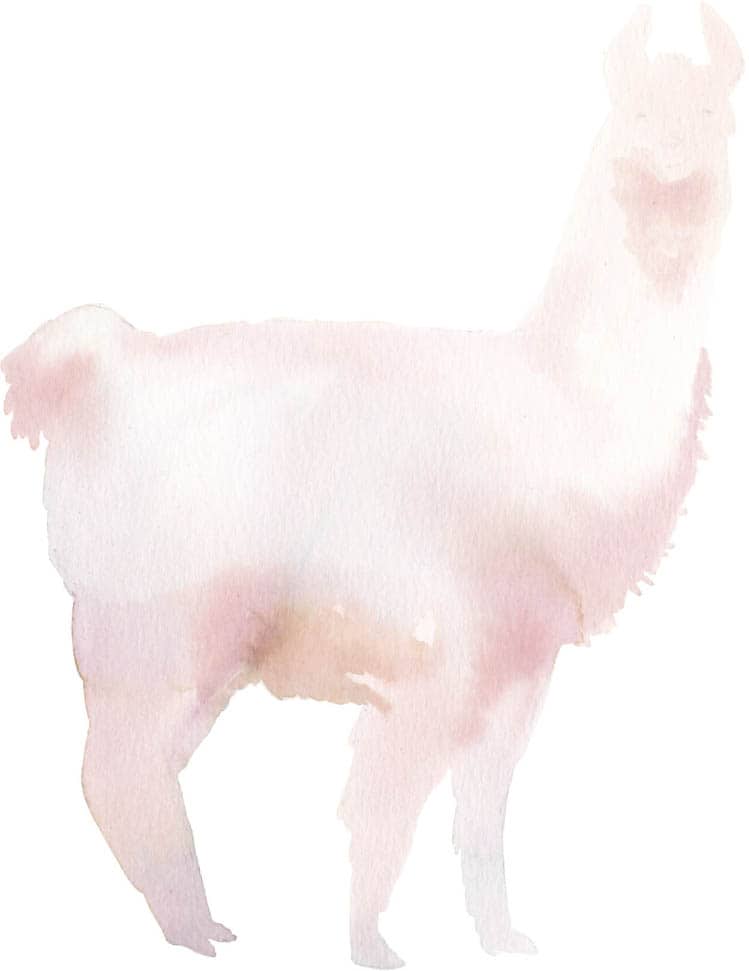
A CUTE FACE
Outline the furry llama with a desaturated blue. Use tiny, short brushstrokes rather than smooth lines. Use a heavier application of color on darker areas in the legs and underbelly. Fill the eyes and snout with a dark application of blue. Fill the inner ear shape with water, then drop pink at the bottom so the color fades as it moves upward. You may use this pink as a light shading color around the face (B).


BRIGHT WHITE
White is placed in squiggly lines to highlight bits of fur throughout. Don’t forget a few lines in the ears! Add tiny details in a light blue where the face needs further defining (C).


Paint the Sloth
The sloth is unlike any other animal in this book! His body curls and hangs with its long limbs. You may get overwhelmed at the many long whips of the brush that this body requires, but don’t give up!
COLORS
![]() Dr. Ph. Martin’s Radiant Concentrated Watercolors: 54D Indian Yellow, 36C Tobacco Brown, 56D Coffee Brown, 28B Sepia
Dr. Ph. Martin’s Radiant Concentrated Watercolors: 54D Indian Yellow, 36C Tobacco Brown, 56D Coffee Brown, 28B Sepia
![]() Copic White
Copic White
BROWNS
A wet-on-wet application—in which we paint with water and then drop color in—is used for the sloth’s body. With varying golden and reddish browns, paint the entire body this way except for the face. Paint the face in a very watery application of sepia. Line one side of the sloth’s claws.
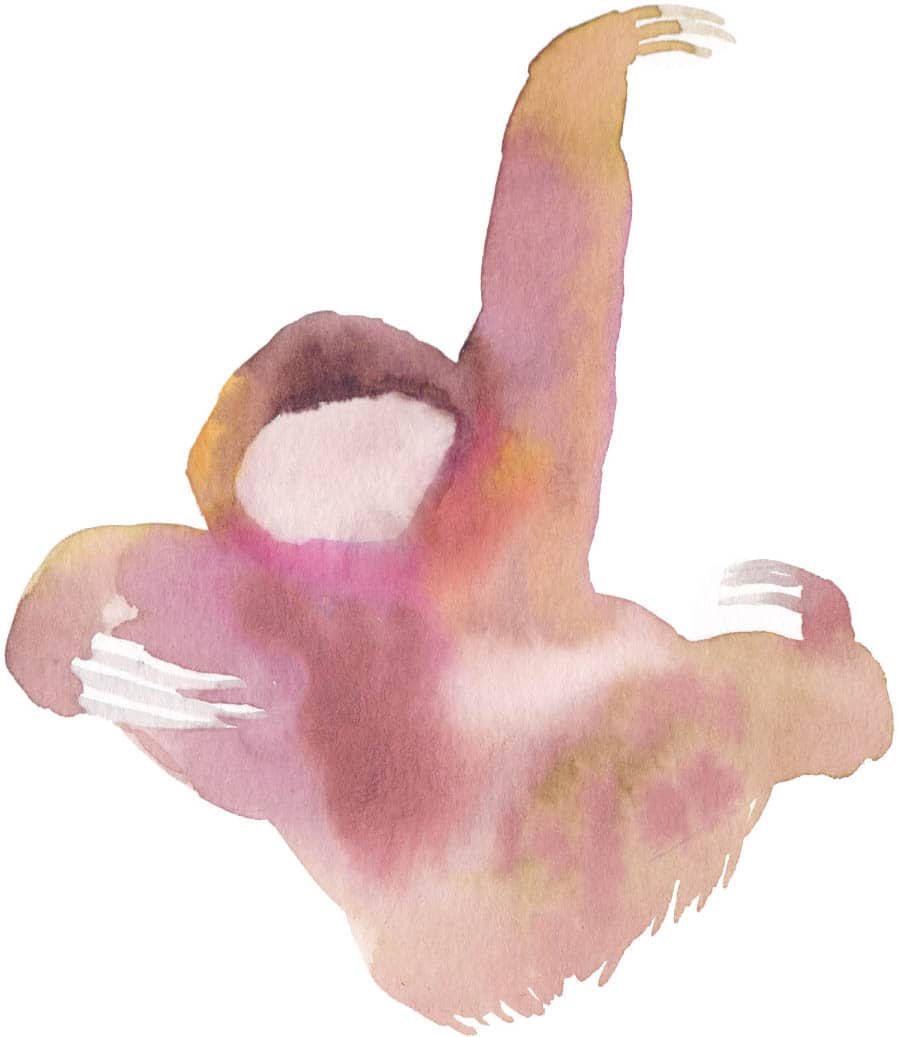
GETTING HAIRY
1The sloth’s essential eye markings are painted in a golden brown. Paint the darkened shape of the nose and mouth. Use a dark brown to add textured details to the body of the sloth, beginning with his face. Be watchful and paint these lines toward the fur, considering his winding limbs. Add another line of shading on the claws, this time with yellow (A).

2Paint simple facial features with a small brush and a dark brown. Beady eyes, a line for the mouth, nostrils, and the bounding edges of the nose are all that you need. Paint a final round of lines over the claws with this dark brown (B). Need any other hairy details? Add them now.


SWINGING
Show fur highlights with a few strokes of white (C). This keeps our sloth from falling flat, as do a few vines, painted with a flat brush. This brush makes these ropes with one (or two) strokes. Add a few decorative leaves (D).
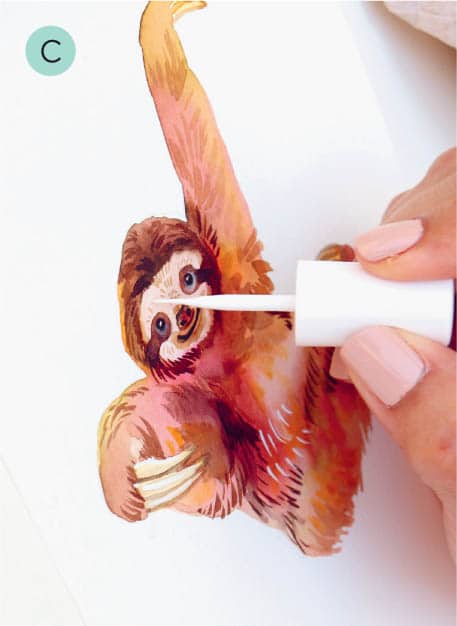


Paint the Cotton-Topped Tamarind
Many animals require color filling before moving on to details and texture. Not so with the tamarind. His white fur throws us right into texture, while his tiny face and claws call us to our small brush.
COLORS
![]() Dr. Ph. Martin’s Radiant Concentrated Watercolors: 22B Slate Blue, 36C Tobacco Brown, 56D Coffee Brown, 14A Black, 8A Turquoise Blue
Dr. Ph. Martin’s Radiant Concentrated Watercolors: 22B Slate Blue, 36C Tobacco Brown, 56D Coffee Brown, 14A Black, 8A Turquoise Blue
WHITE (& BROWN) FUR
1Drawing with your brush, use a light blue to line strands of hair to define the cotton-topped tamarind’s white body. Focus on the outlines and shaded areas; fill them with several blue lines of varying lengths. Apply a watery shadow of blue where the chest bends and the legs overlap each other.
2Use a true blue to paint the face. There are no smooth lines on this tamarind, as he’s so covered in fur. Make jagged lines and fill them; this creates more accurate shapes. Avoid the highlighted eye area and the outlying fur of the snout (A).

3Apply brown in various, long brushstrokes, coming out from under a furry, white headdress. Use this same brown to fill the eyes (B).


LOTS OF LINES
1Use a tiny bit of black for pupils and a few thin lines of brown for the smile and nose. Use turquoise blue to paint deep recesses of the face such as hooded eyes, the eyebrow area where the face juts from the furry body, and the inner ears (C).

2A few more dashes of blue add texture throughout. Outline those fierce claws too (D).


